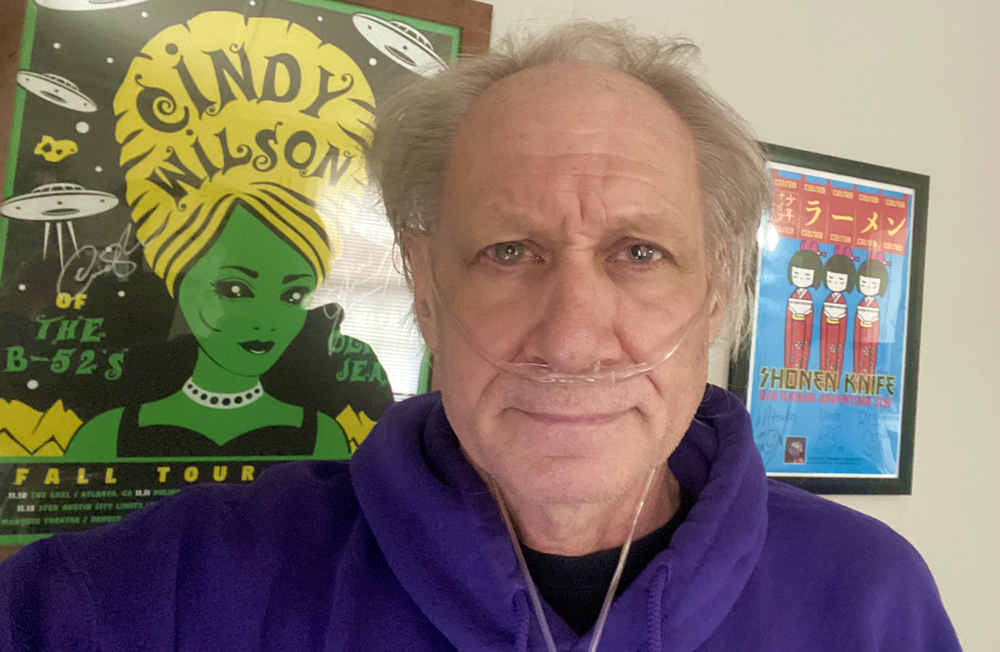My journey with idiopathic pulmonary fibrosis actually starts with my mother.
Since the mid 1990s my mother had been struggling with a mystery illness that left her breathless, caused frequent bouts of coughing, and seemed to be causing a whole host of other health issues. Over the next few years, she was given a variety of treatments for a parade of diagnoses including allergies, bronchitis, and asthma. None of the treatments worked until she finally ended up on oxygen. From that point she went down hill shockingly fast. In 2003 she checked into the hospital where she was immediately put into intensive care. The doctors there gave her a new diagnosis: idiopathic pulmonary fibrosis (IPF), a fatal lung disease with no known cause or cure. She died a few days later.
Early Symptoms
Because there are reported genetic associations with IPF, I had always been worried that this may be a possibility in my future. Sure enough, about seven years ago, I slowly began to experience many of the same symptoms my mom had had. The symptoms were hard to sort out from the background clutter of the aches and pains of getting older, but my inability to improve my cardiovascular health despite frequently going on 8 mile plus day hikes in the Florida backcountry. I’d feel fine on the hike, but would get winded on a short flight of stairs.
I think these early stages of the disease were the most frustrating. Because I had so much insight into what my breathlessness could potentially be, I was forever second guessing myself. “Maybe I’m just out of shape?” “Maybe it’s because it’s so flat here in Florida and I’m just not used to climbing steps?” “Maybe it’s something else?” I saw a few doctors and had some blood work down but everything was inconclusive.
Moving Home
For a variety of reasons, I left Florida and returned home to Athens, GA in 2016, but I think a big underlying driver for the move was that I could tell the breathlessness I was experiencing was getting worse. After being back for a few years the symptoms started getting bad enough that doctors were starting to acknowledge that there was an issue.
Lots of doctor visits, blood tests, and vitals monitoring, until finally I had a CT Scan done. The imaging showed pulmonary fibrosis. Despite my concerns about this being the idiopathic variety, the doctor assured me that the scarring wasn’t severe and I should come back to see him in four months.
When I returned to the pulmonologist, he ordered pulmonary function tests to determine my lung health and rule out asthma. When I saw him next, he gave me a surprising diagnosis: GERD (a.k.a. acid reflux). I had never experienced much heartburn in life, but I was excited that there could be an underlying cause that could be addressed.
A Hopeful Surgery
Doing some research on my own, I came across the work of Dr. Jamie Kaufman, a pioneer in the research of airway reflux – a potential cause of lung scarring. I immediately followed her alkaline diet and to my surprise immediately lost 10 pounds. I went on to lose 30 more and started feeling very good. I had been struggling to lose weight for years but nothing ever worked. It seemed acid was a definite cause of a lot of health struggles for me.
I then saw a gastroenterologist and had laparoscopic Nissen fundoplication surgery and hiatal hernia repair. Fundoplication is where they wrap the top of your stomach around your esophagus to strengthen the lower esophageal sphincter. In the months that followed the surgery I experienced so many health benefits. My chronic lower back pain dramatically improved and I began to feel like a new person. But I was still experiencing shortness of breath and it was definitely getting worse.
I could feel the clock ticking and knew it was time for a second opinion, unfortunately every pulmonologist my insurance covered didn’t have an appointment available for new patients for many months. I began to reach out to friends for advice and one friend knew a pulmonologist in Florida she had grown up with. He couldn’t be my doctor but he could give me advice.
A New Perspective
Sometimes in life you encounter people who know your truth and while his words may seem harsh here, they were the words I already knew were true and just desperately needed to hear from someone in the medical profession. “Look, your mother had idiopathic pulmonary fibrosis, so it’s safe to assume you do too. Let’s focus on saving your life and assume we don’t have much time.”
He went on to tell me that there were new medications that could slow the disease, but in the end it was critical that I started down the road towards lung transplantation. These were the words I so desperately needed to hear. I saw how fast my mother went down hill. I was going down that same hill. I’m a very pragmatic person so having someone acknowledge what I already knew to be true and then offer me possibilities and avenues to go down was incredibly relieving.
I also started seeing a new primary care physician (also recommended to me by that same friend). On my first visit he gave me the six minute walk test (I didn’t make the full six minutes) and then immediately ordered a new CT scan and a pulmonary function test. The tests came back just as I expected: considerable increase in scarring and loss of pulmonary function. I was getting close to the end stages of IPF.
A New Hope
My doctor also gave me a referral to Emory Transplant center and my first appointment is December 12, 2023. From this point on I’ll provide updates on this blog about my lung transplantation journey. I hope you will follow along!

